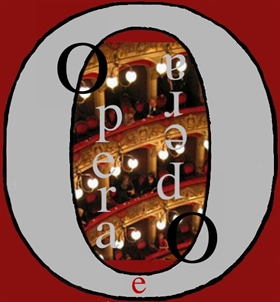Focus by Natalia Di Bartolo on the Work of Art “The wanderer on the sea of fog” of the German romantic genius –
This is the interpretation that is usually given to the splendid painting by the German artist Caspar David Friedrich (born in Greifswald on September 5, 1774 and died in Dresden on May 7, 1840), painted in 1818 and which became the Manifesto of the Romantic Movement:
“The feeling that the famous exponent of romantic art Caspar David Friedrich wants to put on canvas through this work is the sublime, a theme very dear to romantic artists, both painters and writers: it is a sensation made of wonder, surprise, attraction, but also of dismay, fear, concern. It is a force that attracts the traveler towards the infinite sea of fog, but which at the same time disturbs him, renders him powerless. Nature therefore prevails over man - often represented as a small black figure in Friedrich's paintings - and the traveler can do nothing but admire it in silence, helpless. The painter therefore paints not only simple landscapes, but moods, human emotions.” (Fonte Ars Europa)
-

CASPAR DAVID FIEDRICH, “The wanderer on the sea of fog”, 1818, oil on canvas, Kunsthalle, Hamburg.
The painter, who painted his most famous paintings in his youth and who throughout his life was afflicted with existential and physical problems of a cerebral and depressive type, often compared his landscapes to religious themes, starting with his famous and controversial “Cross in the mountains”, to continue precisely with the painting in question, in a positive moment of his personal life and his pictorial activity, which pitifully decayed over time and which saw him die at the age of 66, in poverty, now ignored by most.
So actually, too another interpretation can be given to the painting in question, taking into account the poetics and themes of Friedrich and the blond figure with tousled hair, albeit seen from behind, can be understood as a self-portrait of the artist within that Nature which he was the first to make become protagonist and subject of the paintings, no more “contour” or simple “landscape background”.
The artist, the “wayfarer” subject of the painting, the one who longs for perfection, searches for it, pursues it and often despairs of reaching it because overwhelmed by the power of Nature, is not at all lost: thanks to Art, he has overcome every disordered level of turbulence on the surface of the earth and now, having reached the highest attainable peak, he remains in communication only with that which identifies itself with an Infinite hitherto only longed for, a closeness to the Creator which permeates the whole of Nature with itself.
The German painter considered the natural landscape as a divine work, therefore his character his Rüchkenfigur, he looks down at what he has left not with a feeling of bewilderment or, even less, of contempt, nor of attraction, but aware of having risen to a level which now, in absolute solitude, allows him to look at the rest of the world from above and to feel himself clearly and fully part of the natural Infinite.

«I wrap myself in my cocoon and the others do the same, and I wait to see what will come out, a butterfly or a caterpillar»
Caspar David Friedrich
The bewilderment, if anything, can be caught in feeling alone with the Elements and in feeling part of Nature itself, but in a phase of interaction and communication with it which he has reached on his journey as a wayfarer, now a privileged phase, of which, perhaps, he realizes only now. Above him the sky is serene, nothing disturbs his condition, while he realizes that he is down there, where he comes from, that the sea of fog inspires awe and a feeling of inadequacy and “smallness” and helplessness in the face of so much Power of Nature.
Now he is alone between what he strove for and what inspired him to express himself and what he feared and terrified on his way up to there; but he is amazed at the serenity that surrounds him and at himself; and proud to have at his feet all that ungovernable, overwhelming, fearful he had had in the ascent, together with the rest of Humanity that has remained down there, which is extraneous to the Art, and therefore, in the majority, does not attempt or he dares not even wander, much less ascend.
And’ also aware that it is not humanly possible, not even with the privileged means of the Art, to ascend again: he no longer has any footholds and above him there is another infinite part of the Infinite. But it doesn't even belong to Art, it belongs exclusively to Creation, in a clear admission of the existence of a higher Power that even up there governs it, together with everything else, but which the living are not yet given to explore.
Natalia Di Bartolo ©
Photos from the web


